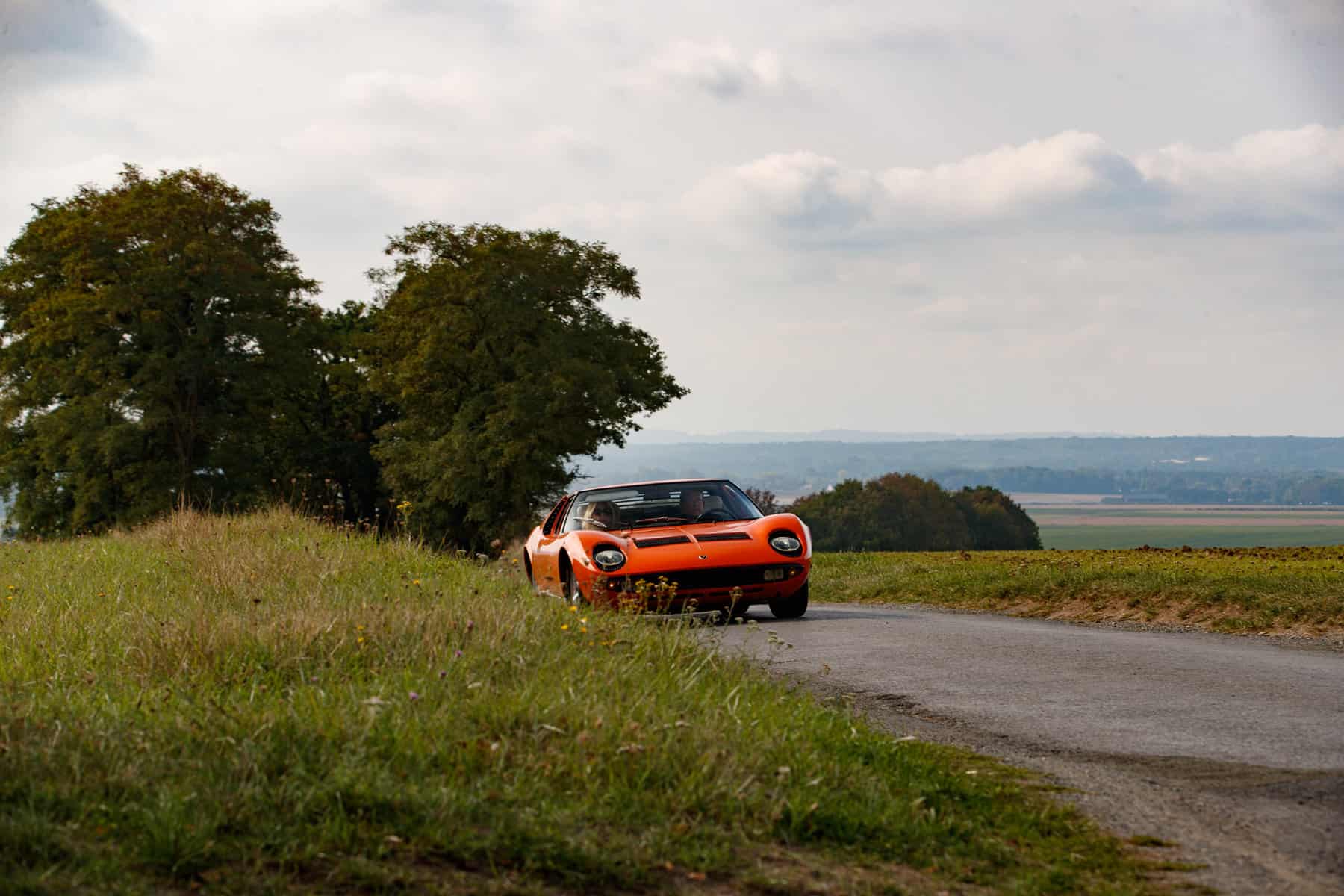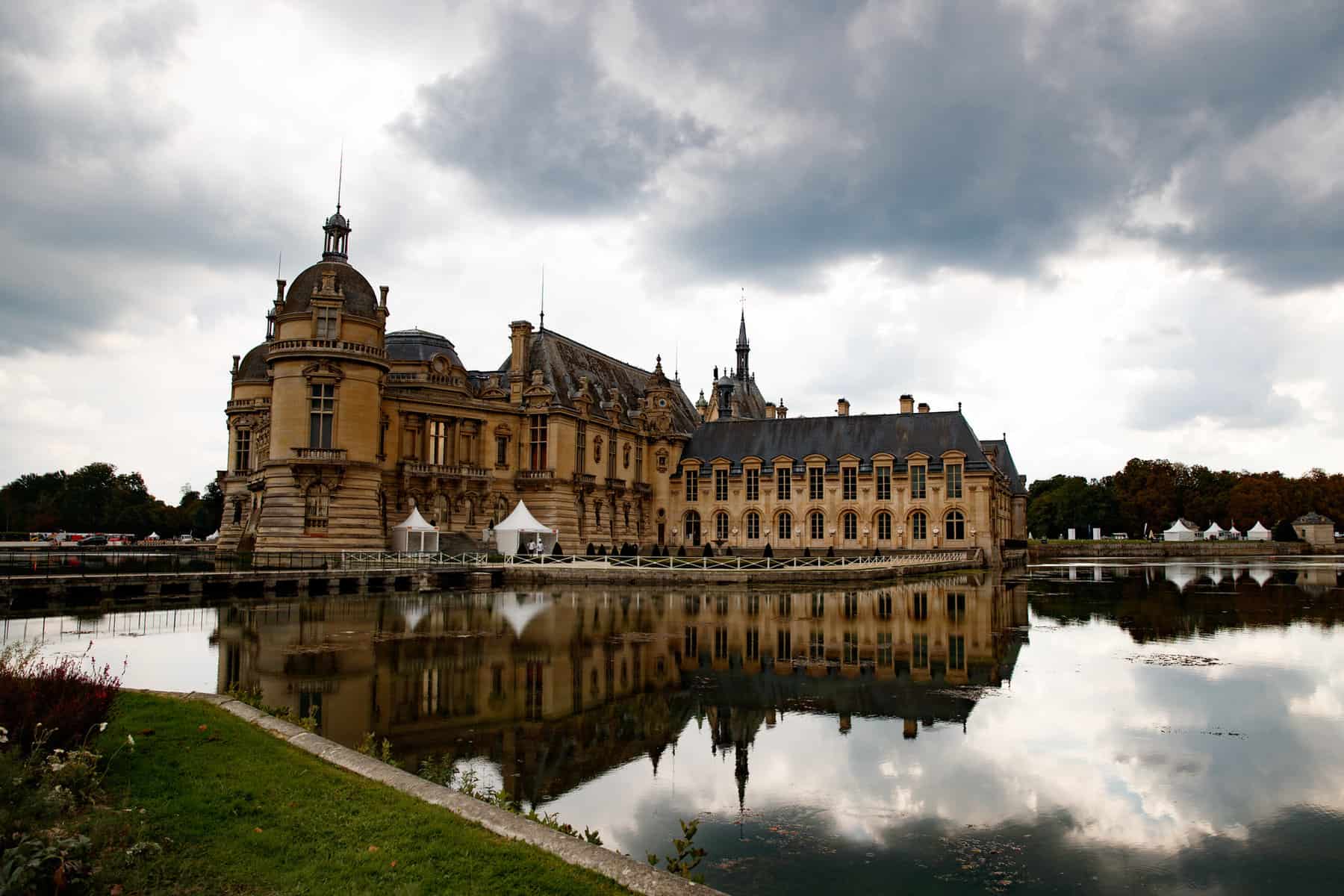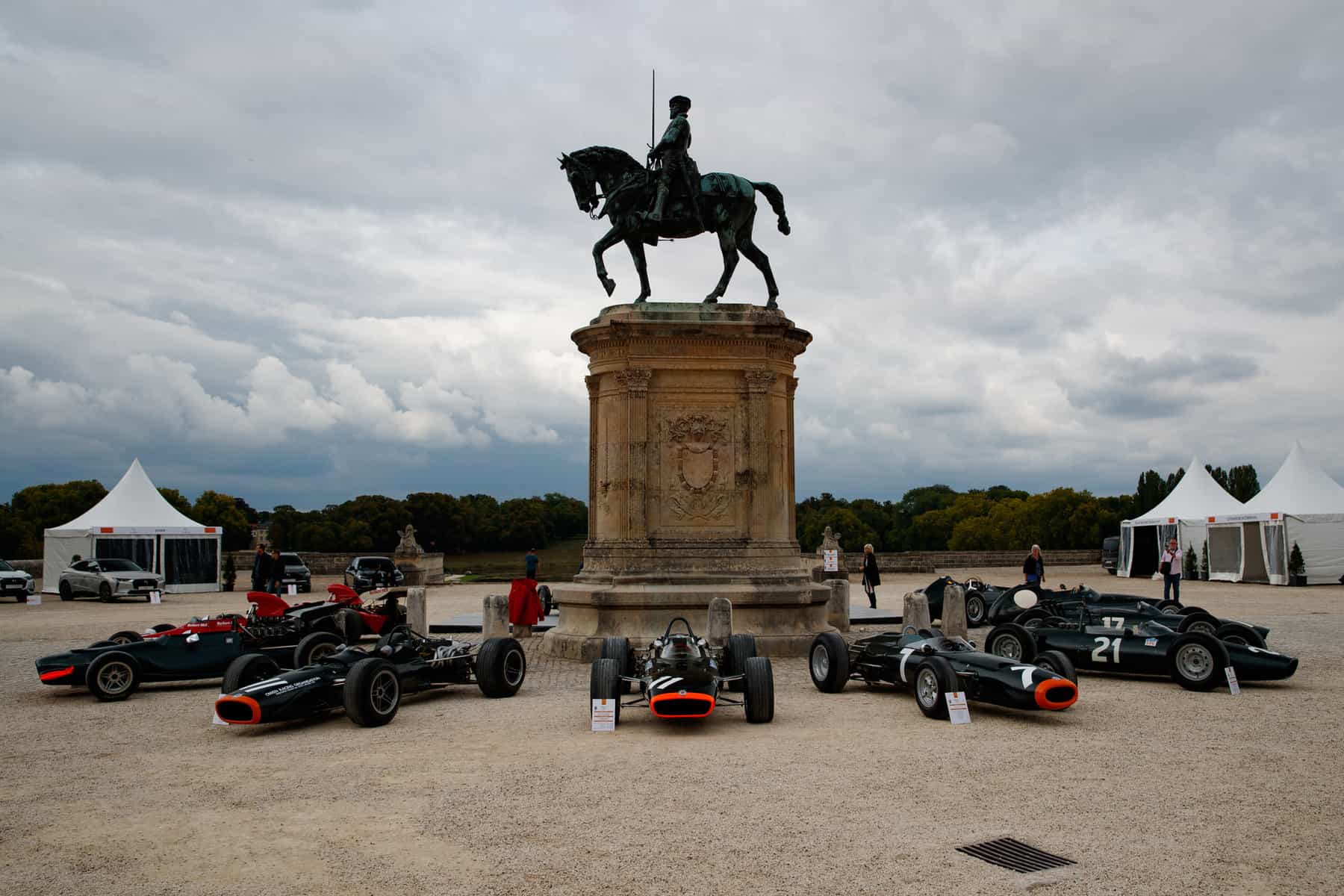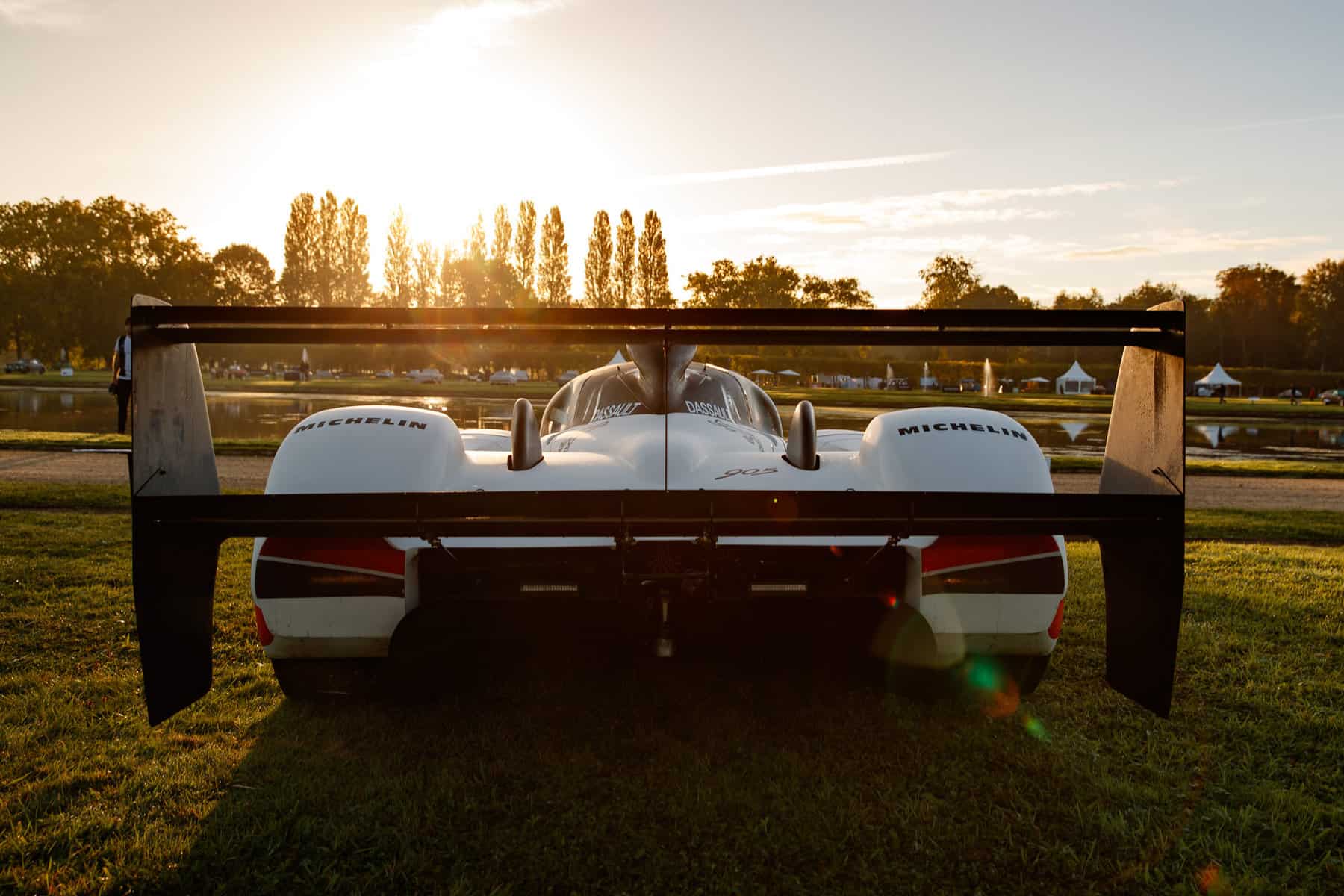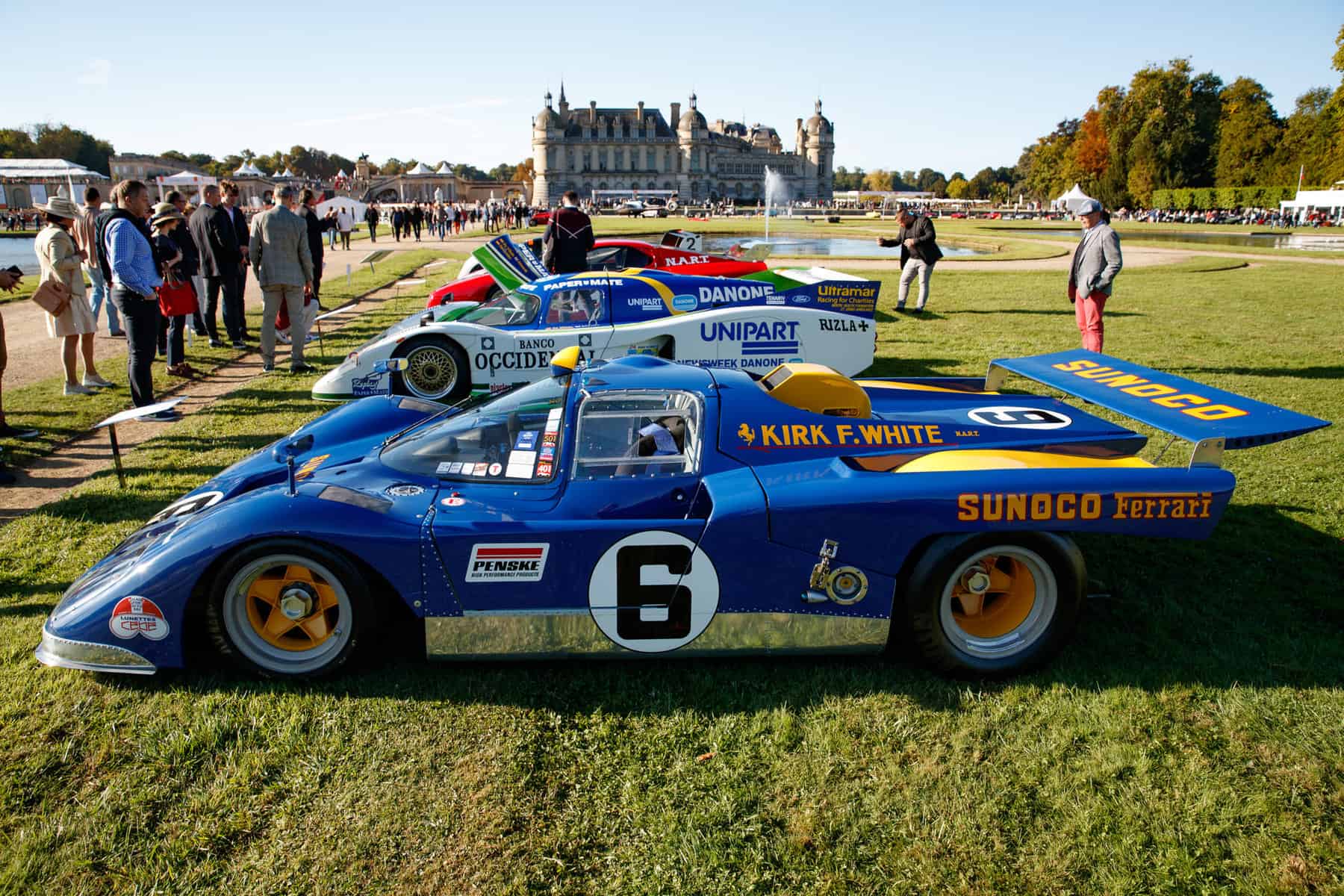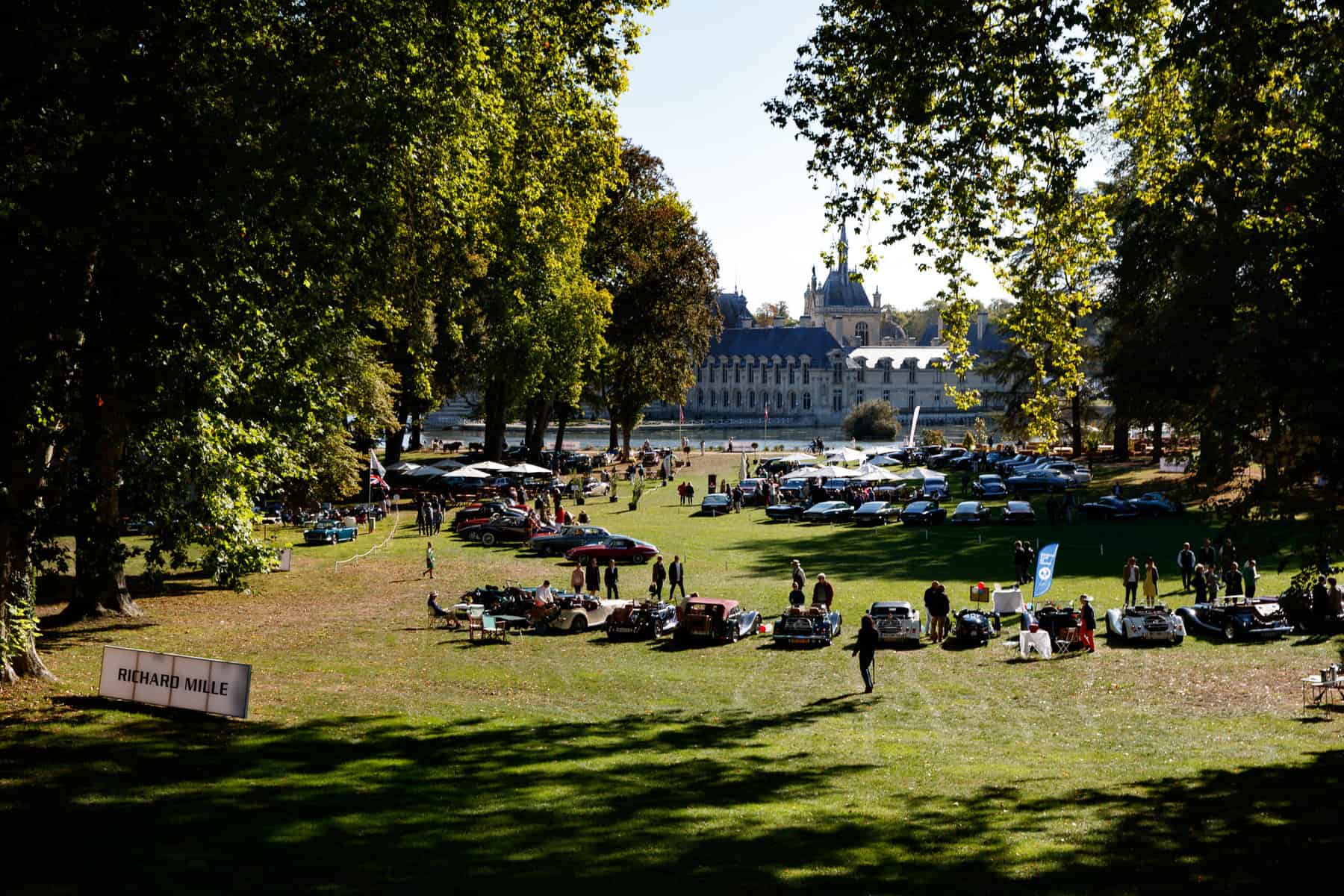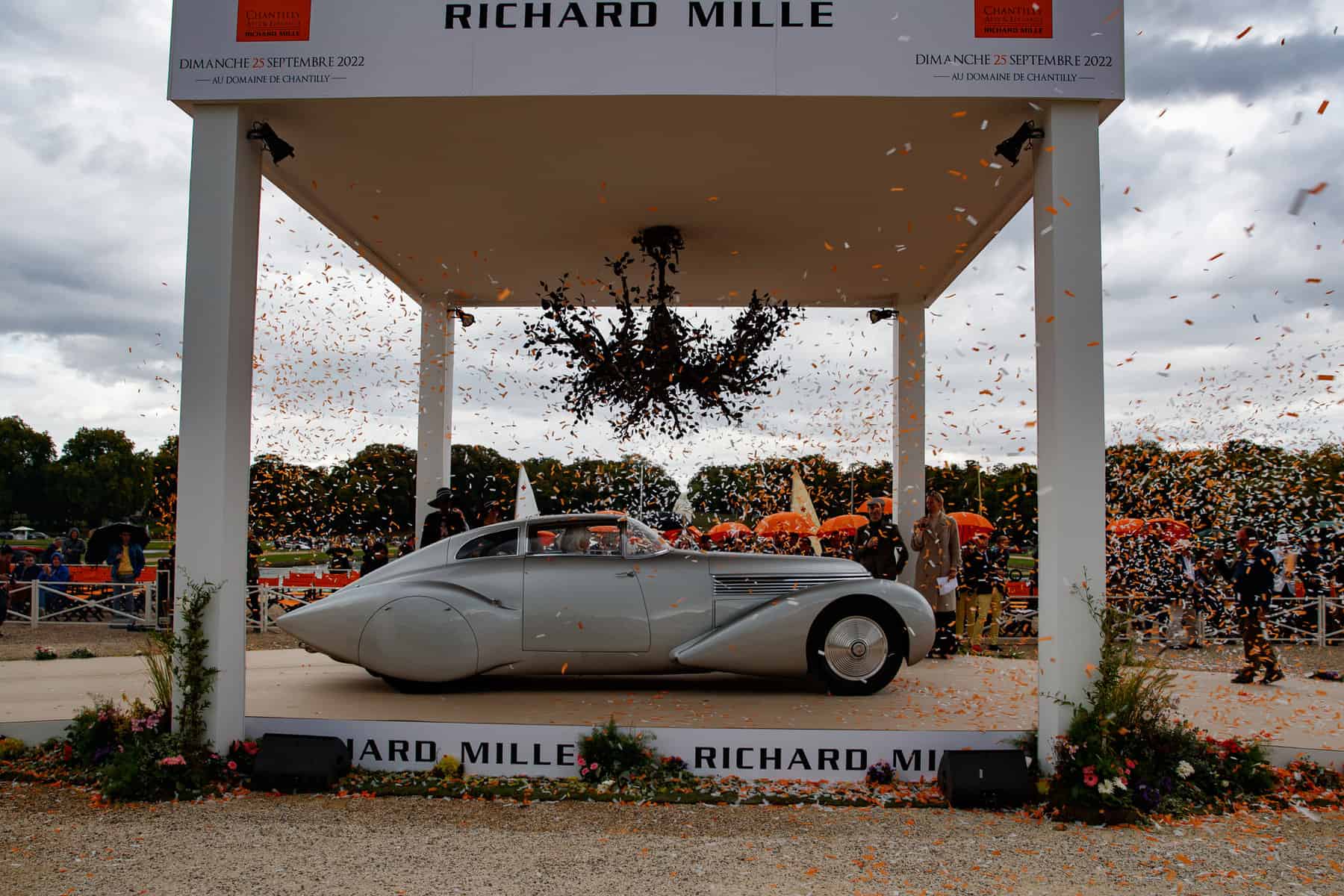2022 Chantilly Arts & Elegance Richard Mille
The original concours returns after a three-year hiatus
WORDS & IMAGES BY: WOUTER MELISSEN
During the 1930s, France was the epicenter of automotive haute couture. Custom coachbuilders like Figoni & Falaschi, Saoutchik, and Chapron produced rolling works of art on a wide variety of French and foreign chassis.
These were first built for the customers who commissioned them but the best were also judged, often accompanied by a model in matching outfit, at the various concours d’elegance that were organized all around the country. After the war, these beauty competitions gradually disappeared. The tradition was kept alive, particularly in the United States, where the French name was retained but the focus shifted to classic cars. In France, there had not been a major concours d’elegance for over a decade when the Chantilly Arts & Elegance Richard Mille was introduced in 2014. After a three-year hiatus, the biennial event was back in September 2022.
Event host Patrick Peter explained, “Concours d’elegance were born in France in the 1920s and almost disappeared in the early 1950s. It was precisely at this time that they multiplied in foreign countries like Pebble Beach in 1950, for example, but in most cases, it was more about concours d’etat, where cars are judged according to their aesthetics, restoration, prize list…but without models. Our wish when launching Chantilly Arts and Elegance Richard Mille was to relaunch the original form of the competition but adapting it to the current times. We have therefore decided to organize a concours d’etat for collectors and a concours d’elegance for manufacturers with their concept cars because this corresponds with what was the presentation of their new designs by coach-builders a century ago now.”
Peter went on, “As there are a lot of concours d’elegance, we also wanted to stand out by finding an exceptional place and I think that the Chateau de Chantilly is indeed exceptional. By presenting other activities than the competition alone; that’s why we always have music, horse riding shows, entertainment for children, and an exhibition (Albrecht Durer this year).” Peter continues: “Finally, as we are in France, we pay particular attention to the gastronomy, which is obviously particularly popular with all foreigners who are present.” One of those many foreigners at the event was American collector and concours judge Chip Connor: “The concours combines exceptional automobiles with fashion, all gracefully hosted by Sylviane and Patrick Peter, and Richard Mille.”
The Chateau de Chantilly was built during the sixteenth century and the large castle has had an eventful life. It was originally built for the Duc de Montmorency, who was a close friend of two French kings. A very wealthy man, he was a symbol of the Renaissance era in France. During the French Revolution, the Chateau was destroyed, only to be rebuilt in the late nineteenth century. Today it is home to the Musée Condé, which houses one of France’s most important and largest collection of Renaissance paintings. On the vast grounds of the estate, there is also a racecourse for horses and a purpose-built canal, which hosts an annual rowing race. The estate was featured in the James Bond movie A View to a Kill, as the home of Christopher Walken’s character, Max Zorin.
“The concours cars are well-selected and well-spaced,” Connor continued, “making for a comparatively relaxed overall experience. Adding to the experience are displays by some forty car clubs on the vast estate.” The contemporary show cars and classic cars were lined up in front of the chateau in a vast garden split by a large body of water. The ample space between the cars meant that each car could be appreciated on its own. As at other Peter Auto events, enthusiast clubs were well accommodated. From their ranks, a Best of Show was chosen by the jury – a challenge in itself as there were seven hundred cars on display around the vast estate.
Reviving the tradition of the classic concours d’elegance, the new show cars were all paraded and accompanied by two models, one male and one female. Serving as a winner’s circle was the pond at the top of the garden around which all cars were driven. This allowed the spectators to sit back and get a great look at all the cars as they were presented one by one. While the all-electric Renault R5 Turbo 3E and DS E-Tense were strictly show cars, others entered in the concours d’elegance were high-end, limited-production sports cars. These included the new Bentley Mulliner Batur of which just eighteen will be produced and the Bugatti Mistral, which is limited to ninety-nine cars and serves as the swan song of the fabled quad-turbo W16 engine. The Best of Show award, however, went to the limited-production Aston Martin DBR22, a sports car inspired by Aston Martin’s successful 1950s sports racers. Attendees were invited to choose a consensus favorite, and the winner turned out to be the Renault 5 Turbo 3E, a modern interpretation of the legendary R5 Turbo 2 rally cars of the 1980s, created to celebrate the fiftieth anniversary of the original R5.
The field of the concours d’etat was spread over seventeen categories, many of which were unique to this year’s edition. These included classes dedicated to DeTomaso, the Bugatti Type 55, Hispano Suiza, and the Bentley Continental. In keeping with Peter Auto’s diverse portfolio of events, which includes the Le Mans Classic, it was not surprising that there were two categories dedicated to next year’s one-hundredth anniversary of the 24 Hours of Le Mans. The first class was for cars competing for the Index of Performance. This was once particularly popular in France and awarded a trophy to the most efficient car in the race. This was often a lightweight, small-displacement machine that had little chance of winning the race outright. The other class was for slippery racers designed to go down the long Hunaudières straight at near terminal velocity. Between the Le Mans groups, there was a special display of the one-hundredth anniversary trophy that will be presented to the outright winner next year and has already been and will continue to be shown at events all around the world until the start of the 24 Hours.
The festivities also included a tribute to the late, great Belgian collector and enthusiast Roland d’Ieteren in the form of three classes dedicated to coach-builder Touring, the company D’Ieteren did much over the past two decades to restore to its former glory. The tributes included the Maserati Quattroporte–based station wagon, Bellagio, and the Alfa Romeo 8C based Disco Volante in both open and closed forms. Particularly striking were the prewar grouping of Touring cars, which included an Alfa Romeo 6C 1750 GT with a highly original body built using Weymann patents. This construction method preceded the lightweight Superleggera bodies for which Touring would become famous. The category was won by another Alfa Romeo, which did use the Superleggera body. Although referred to as a 6C 2500 SS, it was known as the Tipo 256 by Scuderia Ferrari who built it. It used competition underpinnings but could very well be the very first street car produced in one of Enzo Ferrari’s workshops.
Chip Connor also handed out a special award, the “Hommage à Betty Kadoorie,” a class featuring open American sports cars in tribute to Lady Betty Kadoorie who we sadly lost last year. Connor said, “Betty combined exceptional inner and outer beauty with a special charisma recognized by all. Together with her husband Michael and three wonderful kids, she stood for elegance, great cars, and sharing. The family is based in Asia and was unable to attend the event, so I was honored to be asked to present the award which went to a wonderful 1955 red Kurtis Buick 500 X with fabulous racing provenance.”
A particularly colorful category was for Les Voitures Iconoclastes or iconoclastic cars. Among the futuristic cars entered in this class was the Ferrari 365 P show car, which featured three front seats and central steering. Also included was the Rolls Royce Silver Shadow that was built specifically for an American enthusiast and featured a fridge and a stove to cater for the ultimate picnic. Painted bright orange and a familiar sight for those of us who have watched the original Thomas Crown Affair motion picture was the six-cylinder Meyers Manx, a car that was purpose-built for the movie following the directions of the film’s star, Steve McQueen. Whereas most Meyers Max beach buggies were equipped with four-cylinder Volkswagen engines, this would not do for McQueen – he specified a Porsche flat-six to be fitted. By the time Meyers Manx was ready to fit an engine, the production company had had enough and overruled McQueen by having a much cheaper Chevrolet Corvair mounted into the tail of the striking machine.
From the seventeen concours d’etat categories, the jury would go on to pick class winners and two Best of Show, prewar and postwar. All cars capable of driving were out during a lengthy parade in the morning where class winners were awarded, and the entire group of judges had one final chance to pick their respective Best of Show winners. This was not the only opportunity the cars had to drive during the weekend, as there was a 120 km tour scheduled where all the cars were invited. Much like the Tour Auto, which is also organized by the Peter Auto company, the participants received a road book that signaled where they had to go. The route went through nearby forests and up a small hill. Among the cars that participated were a Lamborghini Miura, Bugatti EB110 SS, and a very rare Austrian Gräf & Stift from 1925.
Also in the tour on Saturday was the unique Talbot Lago T26 GS Motto Barchetta that was chosen as the postwar Best of Show. A lovely car, it was nevertheless an inspired choice, surprising the Swiss owners most of all. It was based on the fabled Grand Sport underpinnings and initially boasted a unique closed cockpit body. After the original coachwork was damaged in a rallying accident, it was fitted with a lovely Barchetta body by Italian Rocco Motto. The prewar Best of Show had few people scratching their head. It was the unique Hispano Suiza–based, Saoutchik-bodied Dubonnet Xenia. Created for and by the heir to a vast spirits fortune, it is both a technological and aesthetic masterpiece. Now owned by the Mullin Automotive Museum, it has been a regular winner at events on both sides of the Atlantic.
Connor summed up the event best: “The 2022 Chantilly Concours was particularly memorable, as much for its return to normal as for the spectacular setting afforded by the Château de Chantilly and the seven-odd hundred cars on display, one hundred of which were judged as part of the concours d’etat.” The seventh edition is scheduled for 2024, which gives enthusiasts plenty of time for planning. The Château de Chantilly is worth a visit on any day, but it is a truly special place during the Chantilly Arts & Elegance Richard Mille.

